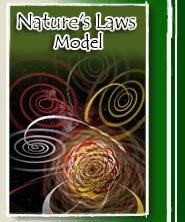|
1 |
2 |
Page 3 | 4 |
5
[<< Previous]
He sees a similar idea in the famous Native American
poet, novelist, and scholar N. Scott Momaday:
Very old in the Native American worldview is the
conviction that the earth is vital, that there is a
spiritual dimension to it, a dimension in which man
rightly exists. It follows logically that there are
ethical imperatives in this matter.
Plains People enjoyed a landscape and an
eco-system distinctive from the Eastern Peoples;
according to Callicott, "the Lakota worldview represents
nature on the model of a large family, the Ojibwa
worldview represents nature on the model of a
multinational community." Or as Calvin Martin represents
the Ojibwa/Lakota comparison:
In the Lakota worldview, the ideal pattern of
interaction between human beings and other
life-forms is understood to be like the interaction
between members of a large healthy family, mutually
dependent and mutually supporting. In the Ojibwa
worldview, the ideal pattern or interaction between
human beings and other life-forms is understood to
be somewhat less intimate – more a matter of mutual
obligation and mutual benefit, with a distinct
quid-pro-quo dimension. Human beings, wildlife, and
plant life were trading partners in a multi-species
economy of nature.
Thus the Algonquin-speaking Ojibwa conceptions of
environmental law stands in sharp contrast to the Lakota by
virtue of the markedly rich and plentiful ecology…forest
heavy with huge leaves, creeks and rivers that wander
through the landscape and animals and plants in abundance.
Among these people, there is no emphasis on the horse, and
no reliance on a single food source, the buffalo. Rather the
emphasis is on the relationship of the People with
creatures:
Consider the following sacred tale; it tells how
"animal" emissaries from the supernatural world gave
rise to the five original patricians of the Ojibwa –
each composed of blood relatives who trace their descent
backward in time through the male line to the individual
who first adopted the name of one of the animals the
supernatural emissaries represented. According to the
tale,
… the five "original" clans [of the Ojibwa]
are descended from six anthropomorphic supernatural
beings who emerged from the ocean to mingle with
human beings. One of them had his eyes covered and
dared not look at the Indians, though he showed the
greatest anxiety to do so. At last he could no
longer restrain his curiosity, and on one occasion
he partially lilted his veil, and his eye fell on
the form of a human being, who instantly fell dead
"as if struck by one of the thunderers." Though the
intentions of this dread being were friendly to men,
yet the glance of his eye was too strong, and it
inflicted certain death. His fellows therefore
caused him to return to the bosom of the great
water.
The five others remained among the Indians,
and "became a blessing to them." From them originate
the five great clans or totems: catfish, crane,
loon, bear, and marten [from which other Ojibwa
clans named after different species were
subsequently derived]. (Levi-Strauss 1; cf. Warren
41-53) Although interesting in and of itself, the
narrative is also informative because it indicates
how the Ojibwa view animals such as catfish, crane,
loon, bear, and marten and their other animal
totems. From the Indians' perspective, these are
much more than mute targets; instead, virtually all
of the animals they pursue are cultural symbols that
represent the spiritual essence of their traditional
social organization. (Driben, Auger et. al. 103)
[Next >>]
|






